MaryAnn Bernal's Blog, page 142
October 18, 2015
History Trivia - Church of the Holy Sepulcher destroyed
October 18
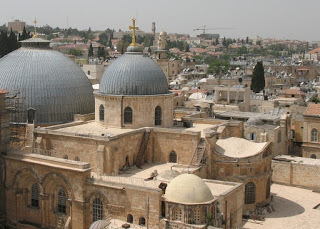
1009 The Church of the Holy Sepulcher, a Christian church in Jerusalem, was completely destroyed by the Fatimid caliph Al-Hakim bi-Amr Allah, who hacked the Church's foundations down to bedrock.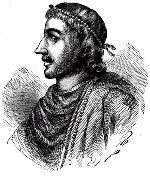 1016 Canute of Denmark became the heir of Edmund Ironside, King of England, with victory at Ashingdon, and Edmund agreed to divide England between himself and Canute. At the end of November, however, Edmund died, and Canute became king of all England.
1016 Canute of Denmark became the heir of Edmund Ironside, King of England, with victory at Ashingdon, and Edmund agreed to divide England between himself and Canute. At the end of November, however, Edmund died, and Canute became king of all England.
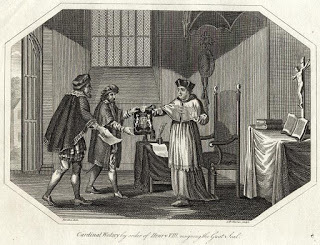
1529 Henry VIII ordered Cardinal Wolsey to hand over the great seal.

1009 The Church of the Holy Sepulcher, a Christian church in Jerusalem, was completely destroyed by the Fatimid caliph Al-Hakim bi-Amr Allah, who hacked the Church's foundations down to bedrock.
 1016 Canute of Denmark became the heir of Edmund Ironside, King of England, with victory at Ashingdon, and Edmund agreed to divide England between himself and Canute. At the end of November, however, Edmund died, and Canute became king of all England.
1016 Canute of Denmark became the heir of Edmund Ironside, King of England, with victory at Ashingdon, and Edmund agreed to divide England between himself and Canute. At the end of November, however, Edmund died, and Canute became king of all England.

1529 Henry VIII ordered Cardinal Wolsey to hand over the great seal.
Published on October 18, 2015 02:00
October 17, 2015
History Trivia - Battle at Tours: Charles Martel victorious
October 17
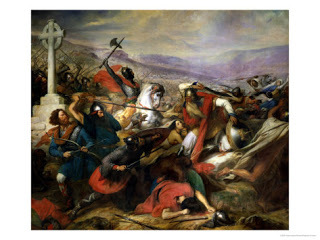
733 Battle at Tours: Charles Martel (grandfather of Charlemagne) defeated Abd al-Rachmans Omajjaden, and halted a northward Islamic expansion into western Europe.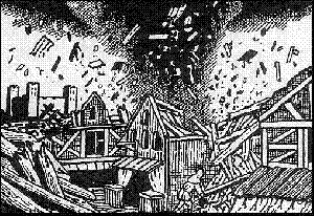
1091 A tornado struck the heart of London which destroyed the rebuilt Norman London Bridge.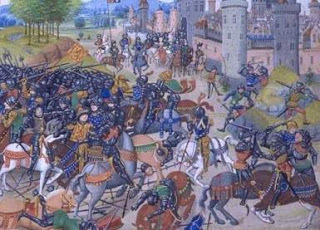
1346 Battle of Neville's Cross: King David II of Scotland was captured by Edward III of England near Durham, and imprisoned in the Tower of London for eleven years.

733 Battle at Tours: Charles Martel (grandfather of Charlemagne) defeated Abd al-Rachmans Omajjaden, and halted a northward Islamic expansion into western Europe.

1091 A tornado struck the heart of London which destroyed the rebuilt Norman London Bridge.

1346 Battle of Neville's Cross: King David II of Scotland was captured by Edward III of England near Durham, and imprisoned in the Tower of London for eleven years.
Published on October 17, 2015 01:00
October 16, 2015
History Trivia - Queen Marie Antoinette beheaded
October 16

1551 Edward Seymour Duke of Somerset and Lord Protector of England during the minority reign of Edward VI was re-arrested. He was executed for felony in January 1552 after scheming to overthrow John Dudley's (Earl of Warwick) regime.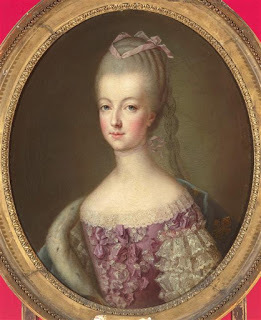
1793 Queen Marie Antoinette was beheaded during the French Revolution.

1551 Edward Seymour Duke of Somerset and Lord Protector of England during the minority reign of Edward VI was re-arrested. He was executed for felony in January 1552 after scheming to overthrow John Dudley's (Earl of Warwick) regime.

1793 Queen Marie Antoinette was beheaded during the French Revolution.
Published on October 16, 2015 01:00
October 15, 2015
10 dangers of the medieval period
History Extra
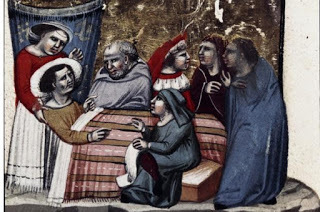 1) Plague The plague was one of the biggest killers of the Middle Ages – it had a devastating effect on the population of Europe in the 14th and 15th centuries. Also known as the Black Death, the plague (caused by the bacterium called Yersinia pestis) was carried by fleas most often found on rats. It had arrived in Europe by 1348, and thousands died in places ranging from Italy, France and Germany to Scandinavia, England, Wales, Spain and Russia.
1) Plague The plague was one of the biggest killers of the Middle Ages – it had a devastating effect on the population of Europe in the 14th and 15th centuries. Also known as the Black Death, the plague (caused by the bacterium called Yersinia pestis) was carried by fleas most often found on rats. It had arrived in Europe by 1348, and thousands died in places ranging from Italy, France and Germany to Scandinavia, England, Wales, Spain and Russia.The deadly bubonic plague caused oozing swellings (buboes) all over the body. With the septicaemic plague, victims suffered from skin that was darkly discoloured (turning black) as a result of toxins in the bloodstream (one reason why the plague has subsequently been called the ‘Black Death’). The extremely contagious pneumonic plague could be contracted by merely sneezing or spitting, and caused victims’ lungs to fill up.
The Black Death killed between a third and half of the population of Europe. Contemporaries did not know, of course, what caused the plague or how to avoid catching it. They sought explanations for the crisis in God’s anger, human sin, and outsider/marginal groups, especially Jews. If you were infected with the bubonic plague, you had a 70–80 per cent chance of dying within the next week. In England, out of every hundred people, perhaps 35–40 could expect to die from the plague.
As a result of the plague, life expectancy in late 14th-century Florence was just under 20 years – half of what it had been in 1300. From the mid-14th-century onwards, thousands of people from all across Europe – from London and Paris to Ghent, Mainz and Siena – died. A large number of those were children, who were the most vulnerable to the disease.
2) TravelPeople in the medieval period faced a host of potential dangers when travelling.
A safe, clean place to sleep upon demand was difficult to find. Travellers often had to sleep out in the open – when travelling during the winter, they ran the risk of freezing to death. And while travelling in groups provided some safety, one still might be robbed or killed by strangers – or even one’s fellow travellers.
Nor were food and drink provided unless the traveller had found an inn, monastery, or other lodging. Food poisoning was a risk even then, and if you ran out of food, you had to forage, steal, or go hungry.
Medieval travellers could also be caught up in local or regional disputes or warfare, and be injured or thrown into prison. Lack of knowledge of foreign tongues could also lead to problems of interpretation.
Illness and disease could also be dangerous, and even fatal. If one became unwell on the road, there was no guarantee that decent – or indeed any – medical treatment could be received.
Travellers might also fall victim to accident. For example, there was a risk of drowning when crossing rivers – even the Holy Roman emperor, Frederick I, drowned in 1190 when crossing the Saleph river during the Third Crusade. Accidents might also happen upon arrival: in Rome during the 1450 jubilee, disaster struck when some 200 people in the huge crowd crossing the great bridge of Sant’ Angelo tumbled over the edge and drowned.

While it was faster to travel by sea than land, stepping onto a boat presented substantial risks: a storm could spell disaster, or navigation could go awry, and the medieval wooden ships used were not always equal to the challenges of the sea. However, by the later Middle Ages, sea travel was becoming faster and safer than ever before.
An average traveller in the medieval period could expect to cover 15–25 miles a day on foot or 20–30 on a horse, while sailing ships might make 75–125 miles a day.
3) FamineFamine was a very real danger for medieval men and women. Faced with dwindling food supplies due to bad weather and poor harvests, people starved or barely survived on meagre rations like bark, berries and inferior corn and wheat damaged by mildew.
Those eating so little suffered malnutrition, and were therefore very vulnerable to disease. If they didn’t starve to death, they often died as a result of the epidemics that followed famine. Illnesses like tuberculosis, sweating sickness, smallpox, dysentery, typhoid, influenza, mumps and gastrointestinal infections could and did kill.
The Great Famine of the early 14th century was particularly bad: climate change led to much colder than average temperatures in Europe from c1300 – the ‘Little Ice Age’. In the seven years between 1315 and 1322, western Europe witnessed incredibly heavy rainfall, for up to 150 days at a time.
Farmers struggled to plant, grow and harvest crops. What meagre crops did grow were often mildewed, and/or terribly expensive. The main food staple, bread, was in peril as a result. This also came at the same time as brutally cold winter weather.
At least 10 per cent – perhaps close to 15 per cent – of people in England died during this period.
4) ChildbirthToday, with the benefits of ultrasound scans, epidurals and fetal monitoring, the risk for mother and baby during pregnancy and childbirth is at an all-time low. However, during the medieval period, giving birth was incredibly perilous.
Breech presentations of the baby during labour often proved fatal for both mother and child. Labour could go on for several days, and some women eventually died of exhaustion. While Caesarean sections were known, they were unusual other than when the mother of the baby was already dead or dying, and they were not necessarily successful.
Midwives, rather than trained doctors, usually attended pregnant women. They helped the mother-to-be during labour and, if needed, were able to perform emergency baptisms on babies in danger of dying. Most had received no formal training, but relied on practical experience gleaned from years of delivering babies.
New mothers might survive the labour, but could die from various postnatal infections and complications. Equipment was very basic, and manual intervention was common. Status was no barrier to these problems – even Jane Seymour, the third wife of Henry VIII, died soon after giving birth to the future Edward VI in 1537.

5) Infancy and childhoodInfancy was particularly dangerous during the Middle Ages – mortality was terribly high. Based on surviving written records alone, scholars have estimated that 20–30 per cent of children under seven died, but the actual figure is almost certainly higher.
Infants and children under seven were particularly vulnerable to the effects of malnutrition, diseases, and various infections. They might die due to smallpox, whooping cough, accidents, measles, tuberculosis, influenza, bowel or stomach infections, and much more. The majority of those struck down by the plague were also children. Nor, with chronic malnutrition, did the breast milk of medieval mothers carry the same immunity and other benefits of breast milk today.
Being born into a family of wealth or status did not guarantee a long life either. We know that in ducal families in England between 1330 and 1479, for example, one third of children died before the age of five.
6) Bad weatherThe vast majority of the medieval population was rural rather than urban, and the weather was of the utmost importance for those who worked or otherwise depended on the land. But as well as jeopardising livelihoods, bad weather could kill.
Consistently poor weather could lead to problems sowing and growing crops, and ultimately the failure of the harvest. If summers were wet and cold, the grain crop could be destroyed. This was a major problem, as cereal grains were the main food source for most of the population.
With less of this on hand, various problems would occur, including grain shortages, people eating inferior grain, and inflation, which resulted in hunger, starvation, disease, and higher death rates.
This was especially the case from the 14th through to the 16th centuries, when the ice pack grew. By 1550, there had been an expansion of glaciers worldwide. This meant people faced the devastating effects of weather that was both colder and wetter.
Medieval men and women were therefore eager to ensure that weather conditions stayed favourable. In Europe, there were rituals for ploughing, sowing seeds, and the harvesting of crops, as well as special prayers, charms, services, and processions to ensure good weather and the fertility of the fields. Certain saints were thought to protect against the frost (St Servais), have power over the wind (St Clement) or the rain and droughts (St Elias/Elijah) and generally the power of the saints and the Virgin Mary were believed to protect against storms and lightning.
People also believed the weather was not merely a natural occurrence. Bad weather could be caused by the behaviour of wicked people, like murder, sin, incest, or family quarrels. It could also be linked to witches and sorcerers, who were thought to control the weather and destroy crops. They could, according to one infamous treatise on witches – the Malleus Maleficarum, published in 1486 – fly in the air and conjure storms (including hailstorms and tempests), raise winds and cause lightning that could kill people and animals.
7) ViolenceWhether as witnesses, victims or perpetrators, people from the highest ranks of society to the lowest experienced violence as an omnipresent danger in daily life.
Medieval violence took many forms. Street violence and brawls in taverns were not uncommon. Vassals might also revolt against their lords. Likewise, urban unrest also led to uprisings – for example, the lengthy rebellion of peasants in Flanders of 1323–28, or the Peasants’ Revolt of 1381 in England.
Medieval records demonstrate the presence of other types of violence also: rape, assault and murder were not uncommon, nor was accidental homicide. One example is the case of Maud Fras, who was hit on the head and killed by a large stone accidentally dropped on her head at Montgomery Castle in Wales in 1288.
Blood feuds between families that extended over generations were very much evident. So was what we know today as domestic violence. Local or regional disputes over land, money or other issues could also lead to bloodshed, as could the exercise of justice. Innocence or guilt in trials were at times decided by combat ordeals (duels to the death). In medieval Wales, political or dynastic rivals might be blinded, killed or castrated by Welsh noblemen to consolidate their positions.
Killing and other acts of violence in warfare were also omnipresent, from smaller regional wars to larger-scale crusades from the end of the 11th century, fought by many countries at once. Death tolls in battle could be high: the deadliest clash of the Wars of the Roses, the battle of Towton (1461), claimed between 9,000 and 30,000 lives, according to contemporary reports.
8) HeresyIt could also be dangerous to disagree. People who held theological or religious opinions that were believed to go against the teachings of the Christian church were seen as heretics in medieval Christian Europe. These groups included Jews, Muslims and medieval Christians whose beliefs were considered to be unorthodox, like the Cathars.
Kings, missionaries, crusaders, merchants and others – especially from the late 11th century – sought to ensure the victory of Christendom in the Mediterranean world. The First Crusade (1096–99) aimed to capture Jerusalem – and finally did so in 1099. Yet the city was soon lost, and further crusades had to be launched in a bid to regain it.
Jews and Muslims also suffered persecution, expulsion and death in Christian Europe. In England, anti-Semitism resulted in massacres of Jews in York and London in the late 12th century, and Edward I banished all Jews from England in 1290 – they were only permitted to return in the mid-1600s.
From the eighth century, efforts were also made to retake Iberia from Muslim rule, but it was not until 1492 that the entire peninsula was recaptured. This was part of an attempt in Spain to establish a united, single Christian faith and suppress heresy, which involved setting up the Spanish Inquisition in 1478. As a result, the Jews were expelled from Spain in 1492, and Muslims were only allowed to stay if they converted to Christianity.
Holy wars were also waged on Christians who were widely considered to be heretics. The Albigensian Crusade was directed at the Cathars (based chiefly in southern France) from 1209–29 – and massacres and more inquisitions and executions followed in the later 13th and 14th centuries.
 9) HuntingHunting was an important pastime for medieval royalty and the aristocracy, and skill in the sport was greatly admired. The emperor Charlemagne was recorded as greatly enjoying hunting in the early ninth century, and in England William the Conqueror sought to establish royal forests where he could indulge in his love of the hunt. But hunting was not without risks.
9) HuntingHunting was an important pastime for medieval royalty and the aristocracy, and skill in the sport was greatly admired. The emperor Charlemagne was recorded as greatly enjoying hunting in the early ninth century, and in England William the Conqueror sought to establish royal forests where he could indulge in his love of the hunt. But hunting was not without risks.Hunters could easily be injured or killed by accidents. They might fall from their horse, be pierced by an arrow, be mauled by the horns of stags or tusks of boars, or attacked by bears.
Status certainly did not guarantee safety. Many examples exist of kings and nobles who met tragic ends as a result of hunting. The Byzantine emperor Basil I died in 886 after apparently having his belt impaled on the horns of a stag and being dragged more than 15 miles before being freed.
In 1100, King William II (William Rufus) was famously killed by an arrow in a supposed hunting accident in the New Forest. Likewise, in 1143, King Fulk of Jerusalem died in a hunting accident at Acre, when his horse stumbled and his head was crushed by his saddle.
10) Early or sudden deathSudden or premature death was common in the medieval period. Most people died young, but death rates could vary based on factors like status, wealth, location (higher death rates are seen in urban settlements), and possibly gender. Adults died from various causes, including plague, tuberculosis, malnutrition, famine, warfare, sweating sickness and infections.
Wealth did not guarantee a long life. Surprisingly, well-fed monks did not necessarily live as long as some peasants. Peasants in the English manor of Halesowen might hope to reach the age of 50, but by contrast poor tenants in same manor could hope to live only about 40 years. Those of even lower status (cottagers) could live a mere 30 years.
By the second half of the 14th century, peasants there were living five to seven years longer than in the previous 50 years. However, the average life expectancy for ducal families in England between 1330 and 1479 generally was only 24 years for men and 33 for women. In Florence, laypeople in the late 1420s could expect to live only 28.5 years (men) and 29.5 years (women).
Dying a ‘good’ death was very important to medieval people, and was the subject of many books. People often worried about ‘sudden death’ (whether in battle, from natural causes, by execution, or an accident) and what would happen to those who died without time to prepare and receive the last rites. Written charms, for example, were thought to provide protection against sudden death – whether against death in battle, poison, lightning, fire, water, fever or other dangers.
Dr Katharine Olson is a lecturer in medieval and early modern history at Bangor University. She specialises in the religious, cultural, social, political and intellectual history of medieval and early modern Britain, Ireland, Europe and the Atlantic world, c1100–1750.
Published on October 15, 2015 03:30
History Trivia - Henry VIII installs bowling lanes at Whitehall
October 15
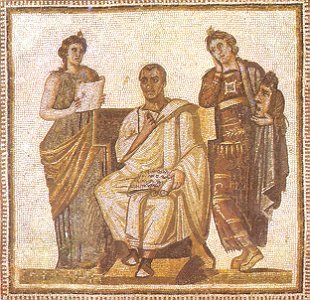
70 BC, Virgil was born. He is considered to be one of the greatest poets of the Roman Empire.
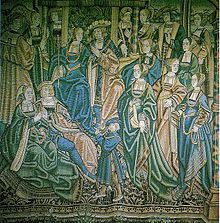
1501 English crown prince Arthur married Catherine of Aragon.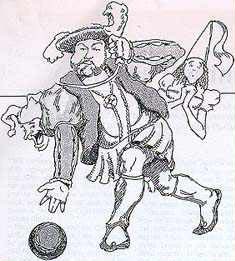
1520 King Henry VIII of England ordered bowling lanes at Whitehall.

70 BC, Virgil was born. He is considered to be one of the greatest poets of the Roman Empire.

1501 English crown prince Arthur married Catherine of Aragon.

1520 King Henry VIII of England ordered bowling lanes at Whitehall.
Published on October 15, 2015 01:00
October 14, 2015
600-Year-Old Royal Ship of Henry V Found Buried in Hampshire River
Ancient Origins
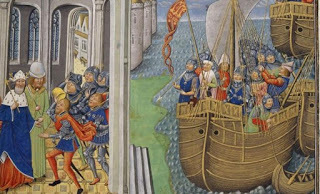 600-Year-Old Royal Ship of Henry V Found Buried in Hampshire RiverA wooden shipwreck believed to be one of King Henry V’s greatest ships has been tentatively identified in the River Hamble in southern England. The 600-year-old warship, known as the Holigost (Holy Ghost) was commission by the king in his war against France.
600-Year-Old Royal Ship of Henry V Found Buried in Hampshire RiverA wooden shipwreck believed to be one of King Henry V’s greatest ships has been tentatively identified in the River Hamble in southern England. The 600-year-old warship, known as the Holigost (Holy Ghost) was commission by the king in his war against France.
The finding was announced today by Historic England, after it was spotted in an aerial photograph by British maritime historian, Dr Ian Friel. A faint U-shaped outline in the mud at the edge of the river is prompting an investigation using sonar, remote sensing, and drone equipment to create a computerized image of what lies beneath the mud.
The location is just 50 meters from the wreck of Henry V’s flagship, The Grace Dieu, the largest ship in Europe at the time – it measures 66 meters long.
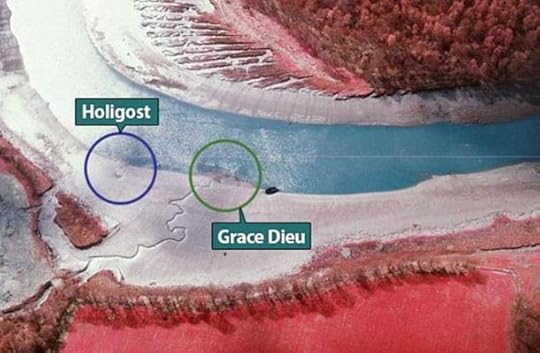 The aerial photograph showing a U-shaped outline (circled blue) on the bank of the River Hamble, located just 50 meters from Henry’s flagship The Grace Dieu (circled green). Credit: Historic England.Dr Friel first stated that the Holy Ghost wreck must be located in the River Hamble close to The Grace Dieu, more than 30 years ago. The Mail Online reports that after identifying the U-shape in grainy aerial photographs, he and a team of archaeologists visited the site at low tide and discovered something hard beneath the surface. But it is only now that Dr Friel has been able to present enough evidence to prompt a full-scale investigation by Historic England, who have said it is a “tangible link” to Henry V.
The aerial photograph showing a U-shaped outline (circled blue) on the bank of the River Hamble, located just 50 meters from Henry’s flagship The Grace Dieu (circled green). Credit: Historic England.Dr Friel first stated that the Holy Ghost wreck must be located in the River Hamble close to The Grace Dieu, more than 30 years ago. The Mail Online reports that after identifying the U-shape in grainy aerial photographs, he and a team of archaeologists visited the site at low tide and discovered something hard beneath the surface. But it is only now that Dr Friel has been able to present enough evidence to prompt a full-scale investigation by Historic England, who have said it is a “tangible link” to Henry V.
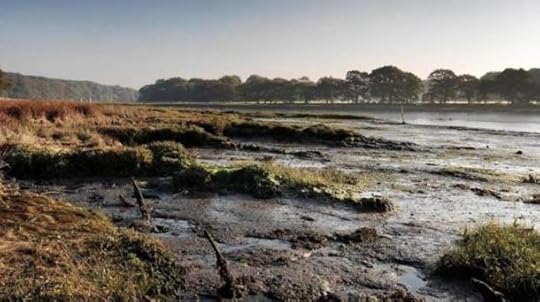 The River Hamble where the wreck of the Holy Ghost is believed to lie. Credit: Historic EnglandThe Holy Ghost was constructed from the timbers of a captured Castilian ship, The Santa Clara, which had been overrun by English pirates in 1413. The ship was taken to Southampton, England, and rebuilt as part of King Henry V’s war machine. It was the third biggest ship in Henry’s navy, capable of carrying up to 200 crew and 750 tons of weapons and equipment.
The River Hamble where the wreck of the Holy Ghost is believed to lie. Credit: Historic EnglandThe Holy Ghost was constructed from the timbers of a captured Castilian ship, The Santa Clara, which had been overrun by English pirates in 1413. The ship was taken to Southampton, England, and rebuilt as part of King Henry V’s war machine. It was the third biggest ship in Henry’s navy, capable of carrying up to 200 crew and 750 tons of weapons and equipment.
The Holy Ghost joined the royal fleet in November, 1415, and fought in two major sea battles during the Hundred Years War – the Battle of Harfleur (1416) and the Battle of Chef de Caux (1417). The ship played a key role in conquering territory in France in the early 15th century. However, after suffering serious damage, the ship was docked in the naval anchorage in the River Hamble and abandoned.
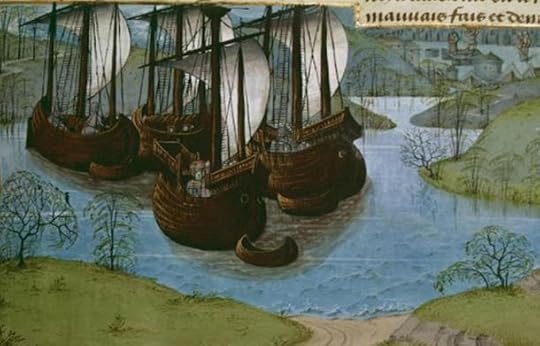 Depiction of the royal fleet of King Edward I of England. From Jean de Wavrin's 'Chronicles of England', c.1470-80.Archaeologists believe that the wreck of the Holy Ghost is likely to be better preserved than that of The Grace Dieu, and they are hoping that it could reveal a great deal about life aboard the ship, naval warfare, as well as 15th century shipbuilding.
Depiction of the royal fleet of King Edward I of England. From Jean de Wavrin's 'Chronicles of England', c.1470-80.Archaeologists believe that the wreck of the Holy Ghost is likely to be better preserved than that of The Grace Dieu, and they are hoping that it could reveal a great deal about life aboard the ship, naval warfare, as well as 15th century shipbuilding.
By April Holloway
 600-Year-Old Royal Ship of Henry V Found Buried in Hampshire RiverA wooden shipwreck believed to be one of King Henry V’s greatest ships has been tentatively identified in the River Hamble in southern England. The 600-year-old warship, known as the Holigost (Holy Ghost) was commission by the king in his war against France.
600-Year-Old Royal Ship of Henry V Found Buried in Hampshire RiverA wooden shipwreck believed to be one of King Henry V’s greatest ships has been tentatively identified in the River Hamble in southern England. The 600-year-old warship, known as the Holigost (Holy Ghost) was commission by the king in his war against France.The finding was announced today by Historic England, after it was spotted in an aerial photograph by British maritime historian, Dr Ian Friel. A faint U-shaped outline in the mud at the edge of the river is prompting an investigation using sonar, remote sensing, and drone equipment to create a computerized image of what lies beneath the mud.
The location is just 50 meters from the wreck of Henry V’s flagship, The Grace Dieu, the largest ship in Europe at the time – it measures 66 meters long.
 The aerial photograph showing a U-shaped outline (circled blue) on the bank of the River Hamble, located just 50 meters from Henry’s flagship The Grace Dieu (circled green). Credit: Historic England.Dr Friel first stated that the Holy Ghost wreck must be located in the River Hamble close to The Grace Dieu, more than 30 years ago. The Mail Online reports that after identifying the U-shape in grainy aerial photographs, he and a team of archaeologists visited the site at low tide and discovered something hard beneath the surface. But it is only now that Dr Friel has been able to present enough evidence to prompt a full-scale investigation by Historic England, who have said it is a “tangible link” to Henry V.
The aerial photograph showing a U-shaped outline (circled blue) on the bank of the River Hamble, located just 50 meters from Henry’s flagship The Grace Dieu (circled green). Credit: Historic England.Dr Friel first stated that the Holy Ghost wreck must be located in the River Hamble close to The Grace Dieu, more than 30 years ago. The Mail Online reports that after identifying the U-shape in grainy aerial photographs, he and a team of archaeologists visited the site at low tide and discovered something hard beneath the surface. But it is only now that Dr Friel has been able to present enough evidence to prompt a full-scale investigation by Historic England, who have said it is a “tangible link” to Henry V. The River Hamble where the wreck of the Holy Ghost is believed to lie. Credit: Historic EnglandThe Holy Ghost was constructed from the timbers of a captured Castilian ship, The Santa Clara, which had been overrun by English pirates in 1413. The ship was taken to Southampton, England, and rebuilt as part of King Henry V’s war machine. It was the third biggest ship in Henry’s navy, capable of carrying up to 200 crew and 750 tons of weapons and equipment.
The River Hamble where the wreck of the Holy Ghost is believed to lie. Credit: Historic EnglandThe Holy Ghost was constructed from the timbers of a captured Castilian ship, The Santa Clara, which had been overrun by English pirates in 1413. The ship was taken to Southampton, England, and rebuilt as part of King Henry V’s war machine. It was the third biggest ship in Henry’s navy, capable of carrying up to 200 crew and 750 tons of weapons and equipment.The Holy Ghost joined the royal fleet in November, 1415, and fought in two major sea battles during the Hundred Years War – the Battle of Harfleur (1416) and the Battle of Chef de Caux (1417). The ship played a key role in conquering territory in France in the early 15th century. However, after suffering serious damage, the ship was docked in the naval anchorage in the River Hamble and abandoned.
 Depiction of the royal fleet of King Edward I of England. From Jean de Wavrin's 'Chronicles of England', c.1470-80.Archaeologists believe that the wreck of the Holy Ghost is likely to be better preserved than that of The Grace Dieu, and they are hoping that it could reveal a great deal about life aboard the ship, naval warfare, as well as 15th century shipbuilding.
Depiction of the royal fleet of King Edward I of England. From Jean de Wavrin's 'Chronicles of England', c.1470-80.Archaeologists believe that the wreck of the Holy Ghost is likely to be better preserved than that of The Grace Dieu, and they are hoping that it could reveal a great deal about life aboard the ship, naval warfare, as well as 15th century shipbuilding.“To investigate a ship from this period is immensely exciting,” said Duncan Wilson, Chief Executive of Historic England. “It holds the possibility of fascinating revelations in the months and years to come.”Featured image: A painting showing what the Holy Ghost ship would have looked like. Credit: British Library / Historic England.
By April Holloway
Published on October 14, 2015 07:48
History Trivia - Battle of Hastings - William the Conqueror defeats England's Harold II
October 14
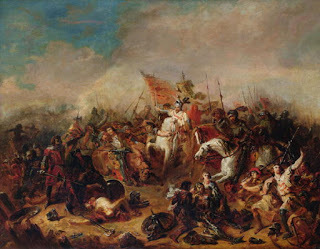
1066 Norman Conquest: Battle of Hastings – In England on Senlac Hill, seven miles from Hastings, the Norman forces of William the Conqueror defeated the English army and killed King Harold II of England.
1322 Robert the Bruce of Scotland defeated King Edward II of England at Byland, forcing Edward to accept Scotland's independence.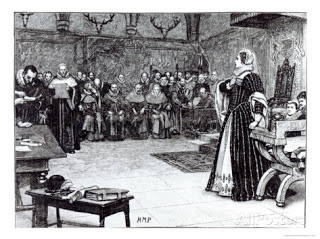
1586 Mary, Queen of Scots, went on trial for conspiracy against Elizabeth I of England.

1066 Norman Conquest: Battle of Hastings – In England on Senlac Hill, seven miles from Hastings, the Norman forces of William the Conqueror defeated the English army and killed King Harold II of England.

1322 Robert the Bruce of Scotland defeated King Edward II of England at Byland, forcing Edward to accept Scotland's independence.

1586 Mary, Queen of Scots, went on trial for conspiracy against Elizabeth I of England.
Published on October 14, 2015 01:00
October 13, 2015
Happy Birthday U.S. Navy - 240 years

The U.S. Navy traces its origins to the Continental Navy, which was established during the American Revolutionary War and was essentially disbanded as a separate entity shortly thereafter. It played a major role in the American Civil War by blockading the Confederacy and seizing control of its rivers. It played the central role in the World War II defeat of Japan. The 21st century U.S. Navy maintains a sizable global presence, deploying in such areas as East Asia, the Mediterranean, and the Middle East. It is a blue-water navy with the ability to project force onto the littoral regions of the world, engage in forward areas during peacetime, and rapidly respond to regional crises, making it an active player in U.S. foreign and defense policy.
Wikipedia
Published on October 13, 2015 15:48
History Trivia - Emperor Claudius poisoned
October 13
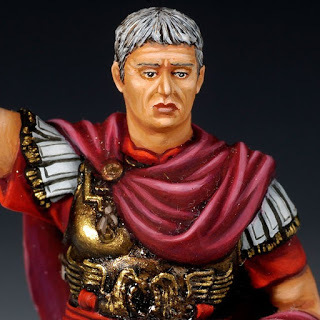
54 Emperor Claudius died from poison given him by his physician Xenophon and his empress Agrippina, and Nero became emperor of Rome.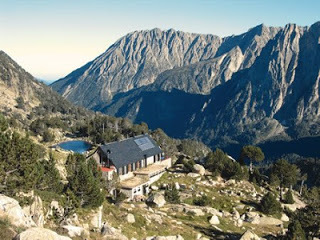
409 Vandals (East Germanic tribe) and Alans (group of Sarmatian tribes) crossed the Pyrenees and appear in Hispania (Iberian Peninsula, modern day Spain, Portugal, Andorra, and Gibraltar).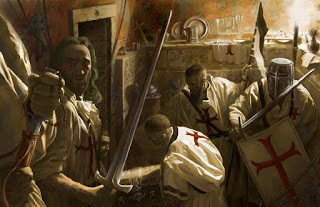
1307, on Friday the 13th, Hundreds of Knights Templar in France were simultaneously arrested by agents of Phillip the Fair, and were later tortured into a confession of heresy.

54 Emperor Claudius died from poison given him by his physician Xenophon and his empress Agrippina, and Nero became emperor of Rome.

409 Vandals (East Germanic tribe) and Alans (group of Sarmatian tribes) crossed the Pyrenees and appear in Hispania (Iberian Peninsula, modern day Spain, Portugal, Andorra, and Gibraltar).

1307, on Friday the 13th, Hundreds of Knights Templar in France were simultaneously arrested by agents of Phillip the Fair, and were later tortured into a confession of heresy.
Published on October 13, 2015 01:00
October 12, 2015
History Trivia - England's King John loses crown jewels
October 12
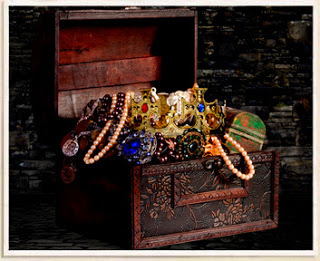
1216 King John of England lost the crown jewels in The Wash, possibly near Fosdyke or near Sutton Bridge.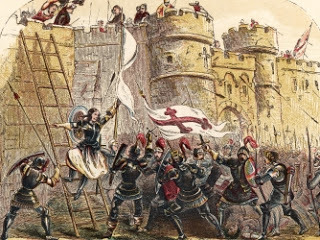
1428 the Siege of Orleans began which lasted until Joan of Arc persuaded King Charles VII of France to send an army to relieve the city in April.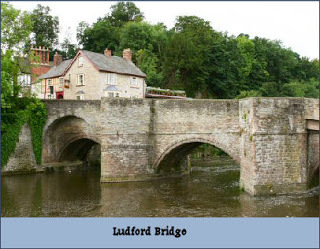
1459 Battle at Ludford Bridge- Richard of York defeated.

1216 King John of England lost the crown jewels in The Wash, possibly near Fosdyke or near Sutton Bridge.

1428 the Siege of Orleans began which lasted until Joan of Arc persuaded King Charles VII of France to send an army to relieve the city in April.

1459 Battle at Ludford Bridge- Richard of York defeated.
Published on October 12, 2015 01:00



